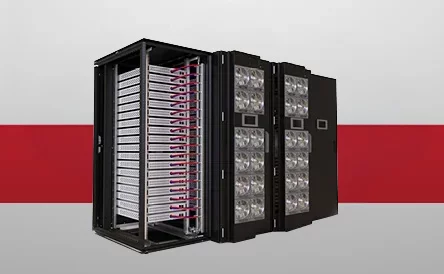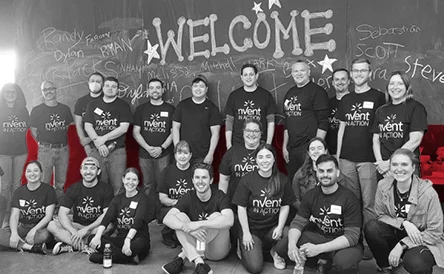Navigating the AI Heat Wave: Liquid Cooling Trends Driving Efficiency and Performance
Liquid cooling is here to stay. With demand for AI and high-performance computing on the rise, data center managers are grappling with how to handle higher heat loads. At the same time, pressure has increased to drive sustainability, as data centers have begun to be seen as large resource consumers. Both these trends are driving the adoption of liquid cooling.
Liquid cooling systems offer both an alternative and a supplement to traditional air cooling that can improve energy consumption, lower operating costs and increase sustainability. Because liquid provides a much greater heat transfer capacity – 3,500 times higher than that of air – and can get closer to the source of heat than air, liquid cooling systems can significantly improve power usage effectiveness (PUE). As we shared in our recent sustainability report, liquid cooling can bring a potential improvement in PUE of up to 45% compared to air cooling.
Additionally, Microsoft recently published a study stating that switching from air cooling to cold plates could reduce greenhouse gas emissions and energy demand by roughly 15 percent and water consumption by 30 to 50 percent across the datacenters’ entire life spans.
However, the switch to liquid is not always easy for data center operators; they must consider downtime, construction costs and environmental impact while figuring out how to deploy the latest next-gen chips in a rapidly changing industry. Looking at 2026 and beyond, there are several trends data center managers should prepare for when thinking about liquid cooling and data center sustainability.
Supporting Efficiency Even Without Facility Liquid Infrastructure
Many data centers are grappling with the challenge of supporting next-generation chips and making their operations more energy efficient. In an ideal world, many data centers would be equipped with liquid infrastructure for each rack. However, data center construction projects and retrofits can come with extended downtime and require significant time and financial commitments. While facility liquid lines to each rack certainly help run a more energy-efficient data center, construction projects can have environmental drawbacks, as the construction process is very water and energy-intensive. Building new data centers is a long process, and it is important for sustainability that the industry makes sure it is getting as much compute as possible out of the existing footprint.
Liquid-to-air technology can help. Liquid-to-air heat exchangers can help data center managers deploy liquid cooling without relying on facility water by running a closed loop of liquid through racks and then rejecting heat into the air, where it can be managed by existing cooling systems. LTA cooling systems can support high-performance computing and next-generation technology and can help reduce operating costs while maintaining uptime and reliability.
Colocation data centers can also use LTA technology to run high-performance computing clusters within their facilities, helping them diversify their business and improve efficiency. The modular design of LTA units also helps data centers expand as cooling demand grows, maintaining flexibility for enhancing capabilities without long retrofit projects.
Saving Water Using Liquid Cooling
It may seem counterintuitive, but cleverly engineered liquid cooling systems can actually use less water than air cooling. Many air-cooled data centers use evaporative cooling for their air conditioning. Evaporative cooling systems use large heat exchangers to capture heat from room air that has been heated by IT. These heat exchangers then transport heat using water, which is cooled by running it across cooling pads, evaporating the water into the air. Because water is vaporized as a part of this process, it needs to be replaced through external sources.
Many liquid cooling systems use closed loops that recycle water through racks. These liquid loops only need to be refreshed for water quality concerns and can be cooled with other liquid loops that provide better heat transfer capacity and more opportunities for sustainability. Notably, heat that is carried by water can be reused for other applications like building heating, ice melting, agriculture, wastewater treatment or local heating systems. This adds another layer of sustainability to data centers, turning a water-intensive process where heat is dissipated into a more efficient system where heat is reused.
Liquid Cooling Beyond the Rack
Data centers can also increase sustainability by using liquid cooling in facility infrastructure, such as energy storage. Backup power is critical for data centers because the industry demands 24/7 uptime, regardless of disruptions or fluctuations in the local grid.
Additionally, as more and more data centers start to generate their own energy to reduce dependence on the grid and improve resiliency, they need onsite energy storage to balance differences in energy generation and use. For instance, solar power can greatly improve overall data center sustainability, but it is only possible to generate solar power during the day when the sun is out. Energy storage can help decouple energy generation and use.
Space is at a premium in data centers, so energy storage installations need to take up as small of a footprint as possible. Liquid cooling can improve energy density in energy storage applications in the same way it can improve chip density. Running liquid lines through racks of batteries helps maintain safety by keeping batteries from overheating while allowing designers to place more batteries in close proximity, improving energy density. In this way, innovations inside the data center can be applied to its supporting infrastructure, improving safety and sustainability.
Servicing Liquid Cooling Systems
In legacy air-cooling systems, it is critical for data center managers to manage air flow and inlet temperatures to meet the needs of the chips being cooled. However, in these applications, the cooling is tied to the entire room, so individual systems do not have as large of a direct impact on cooling performance.
In liquid cooling applications, compute power is directly tied to the performance of the cooling system because the cooling loop runs all the way to the chip. If cooling goes down, even momentarily, it will disrupt data center operations and damage equipment. The time scales for overheating, equipment shutdown and catastrophic failures are often less than 30 seconds. This requires a very purpose-optimized and solution-driven approach to installing and maintaining cooling systems.
One side of maintenance that is worth calling out specifically is fluid management. The cooling distribution unit is the heart of the data center system, and following this analogy, the fluid is the blood. If the fluids inside cooling lines are not properly treated and filtered, it can lead to bio growth, corrosion, fouling of cold plates, debris in cooling loops and, ultimately, damage to equipment. With millions of dollars of IT sitting inside data center racks, there is little room for error. It is critical that data center personnel either understand or partner with someone who understands how to manage water quality.
Water quality management extends from installation through the life of cooling equipment. It often includes regular filter cleaning and changes, flushing secondary pipework during installation or before delivery to prevent bio growth before the system is switched on, periodic liquid testing and remediation to ensure liquid quality. It is important for data center managers to select cooling equipment that is easy to service and have a plan in place for maintaining water quality before the equipment is installed.
With a focus on reliability and efficiency, nVent is committed to providing cutting-edge cooling solutions tailored to meet the demands of modern data centers and high-performance environments. Learn more about nVent’s comprehensive portfolio and expertise, including data center solutions: Data Centers and Networking | nVent DATA-SOLUTIONS





